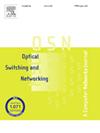Visible light communication technologies: A tutorial and survey from fundamentals to cutting-edge innovations
IF 3.1
4区 计算机科学
Q3 COMPUTER SCIENCE, INFORMATION SYSTEMS
引用次数: 0
Abstract
The integration of Visible Light Communication (VLC) has represented a major breakthrough by unlocking a new band of the spectrum, the visible light domain, while complementing the existing radio frequency spectrums. This innovation paves the way for applications that were previously inaccessible through traditional radio-based technologies. VLC has not only alleviated congestion in wireless networks but also offers a unique opportunity for expanding the Internet of Things (IoT), enabling communication between a multitude of connected devices. This paper provides a comprehensive review of VLC, tracing its development from its inception to the present state. The analysis is structured around the three essential components of a communication chain: the transmitter, the receiver, and the transmission channel. It is a synthesis of current knowledge, examining the various types of transmitters used, their adaptation to different applications, and their advantages and limitations. The paper also explores the methods for modeling transmission channels in VLC, detailing the differences between indoor and outdoor channels and how each type of channel corresponds to specific applications, along with their respective strengths and weaknesses. Additionally, particular attention is given to VLC receivers, analyzing their specificities based on channel types and the applications they are associated with. Through this review, the paper not only highlights the achievements made by researchers thus far but also discusses the challenges and future prospects in this ever-evolving field. Simulations and case studies are presented chronologically, providing a comprehensive view of the progress made and the results obtained, while identifying research avenues that need further exploration to advance this revolutionary technology.
可见光通信技术:从基础到前沿创新的教程和调查
可见光通信(VLC)的集成代表了一个重大突破,它解锁了一个新的频谱波段,即可见光域,同时补充了现有的射频频谱。这一创新为以前通过传统无线电技术无法实现的应用铺平了道路。VLC不仅缓解了无线网络的拥塞,而且为扩展物联网(IoT)提供了独特的机会,使众多连接设备之间的通信成为可能。本文对VLC进行了全面的回顾,追溯了它从诞生到现在的发展历程。该分析围绕通信链的三个基本组成部分进行:发送器、接收器和传输信道。它综合了当前的知识,研究了所使用的各种类型的发射机,它们对不同应用的适应性,以及它们的优点和局限性。本文还探讨了VLC中传输通道的建模方法,详细介绍了室内和室外通道之间的差异,以及每种类型的通道如何对应于特定应用,以及各自的优缺点。此外,还特别关注了VLC接收器,根据信道类型和与之相关的应用分析了它们的特性。通过回顾,本文不仅突出了迄今为止研究人员所取得的成就,还讨论了这一不断发展的领域所面临的挑战和未来的前景。模拟和案例研究按时间顺序呈现,提供了取得的进展和获得的结果的全面视图,同时确定了需要进一步探索的研究途径,以推进这一革命性技术。
本文章由计算机程序翻译,如有差异,请以英文原文为准。
求助全文
约1分钟内获得全文
求助全文
来源期刊

Optical Switching and Networking
COMPUTER SCIENCE, INFORMATION SYSTEMS-OPTICS
CiteScore
5.20
自引率
18.20%
发文量
29
审稿时长
77 days
期刊介绍:
Optical Switching and Networking (OSN) is an archival journal aiming to provide complete coverage of all topics of interest to those involved in the optical and high-speed opto-electronic networking areas. The editorial board is committed to providing detailed, constructive feedback to submitted papers, as well as a fast turn-around time.
Optical Switching and Networking considers high-quality, original, and unpublished contributions addressing all aspects of optical and opto-electronic networks. Specific areas of interest include, but are not limited to:
• Optical and Opto-Electronic Backbone, Metropolitan and Local Area Networks
• Optical Data Center Networks
• Elastic optical networks
• Green Optical Networks
• Software Defined Optical Networks
• Novel Multi-layer Architectures and Protocols (Ethernet, Internet, Physical Layer)
• Optical Networks for Interet of Things (IOT)
• Home Networks, In-Vehicle Networks, and Other Short-Reach Networks
• Optical Access Networks
• Optical Data Center Interconnection Systems
• Optical OFDM and coherent optical network systems
• Free Space Optics (FSO) networks
• Hybrid Fiber - Wireless Networks
• Optical Satellite Networks
• Visible Light Communication Networks
• Optical Storage Networks
• Optical Network Security
• Optical Network Resiliance and Reliability
• Control Plane Issues and Signaling Protocols
• Optical Quality of Service (OQoS) and Impairment Monitoring
• Optical Layer Anycast, Broadcast and Multicast
• Optical Network Applications, Testbeds and Experimental Networks
• Optical Network for Science and High Performance Computing Networks
 求助内容:
求助内容: 应助结果提醒方式:
应助结果提醒方式:


